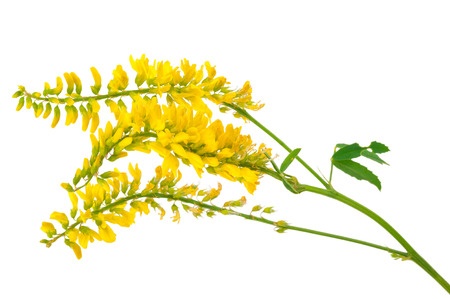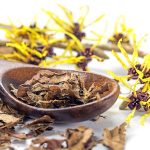
Melilotus officinalis (syn. M. arvensis) is commonly called the yellow melilot, ribbed melilot or yellow sweet clover. It is a member of the Leguminosae or Papilionaceae family.
This herb is rich in coumarins and reminds us of newly-mown hay when it drying. If the herb is dried poorly or fermented then it produces dicoumarol which is a strong anti-coagulant. Dicoumarol is the main constituent of rat poison so it is extremely poisonous in any excess or the herb is badly prepared. Coumarins are allied to vitamin K derivatives and there is considerable pharmaceutical interest in these agents. The herb is also commercially important as a flavouring for snuff and tobacco. You might find it in moth repellant !
Melilot is used to draw out toxins and reduce inflammation. The ancient Greeks prepared plasters containing melilot and the practice still continues in some European countries. There are a few other species used culinary circles for flavouring. M. caerulea as its latin name suggests is a blue flowered plant which is grown in Switzerland to flavour sapsago or Schabziger cheese.
These plants are hardy and prefer to live in dry, alkaline to neutral soils in a full sun. Propagate from seed in spring or autumn.
Uses
The whole plant is used.
It serves as an aromatic sedative which is also claimed to have diuretic properties, relives spasms and other forms of pain, reduces congestion and inflammation and has this potent anti-coagulation/anti-thrombotic effect.
Culinary uses:
The dried herb is often used to flavour rabbit stews, marinades and Gruyere cheese.
Medicinal uses:
The herb has been taken for many conditions although much of this requires verification. It cannot be used by anyone on warfarin or with a record of poor blood-clotting !
The conditions taken for use are:- tense nervous headache, neuralgia, palpitations, insomnia, varicose veins, thrombosis, painful congestive menstruations. laos used for eye inflammation, rheumatic pain, swollen joints, severe bruising, boils and erysipelas.


Leave a Reply